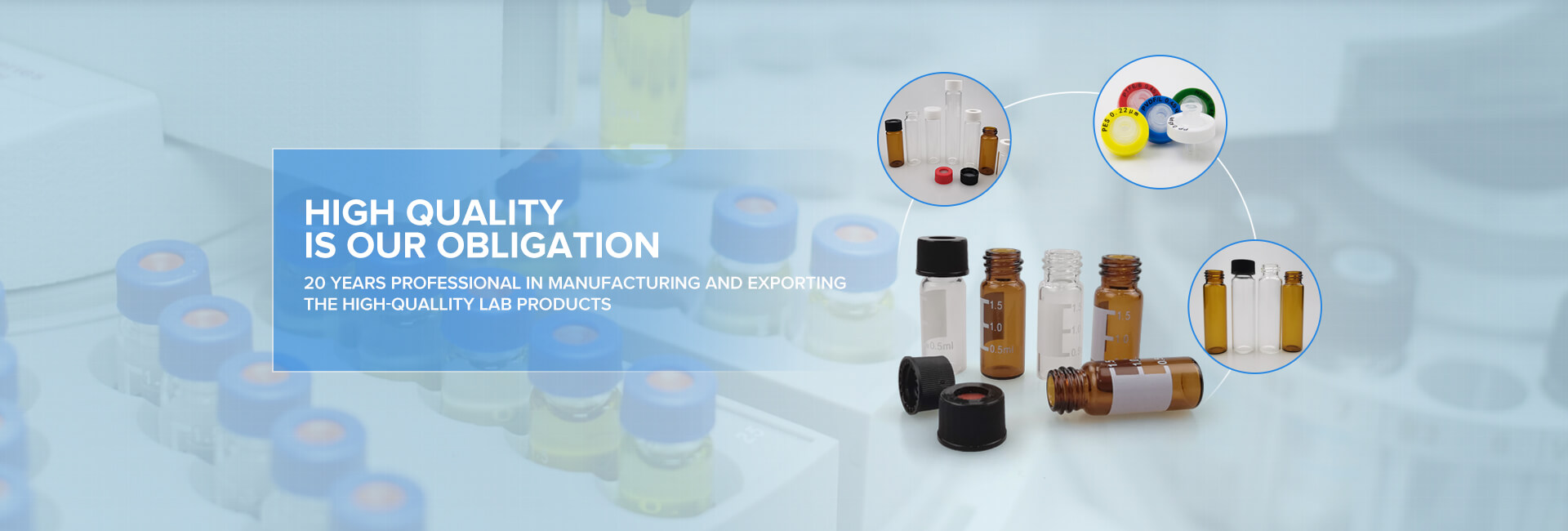


The rim of the insert is positioned slightly above the top of the vial so the septum can make a secure seal with the closure, eliminating evaporation and cross contamination. The insert is centered into the vial, 2 mm from the bottom, allowing for consistent sample recovery and eliminating problems caused by variation in insert depth.

Vials and Septa to meet your application: 1.5mL, 4mL, 10mL and 20mL headspace vials, EPA screw vials, crimpers and decappers, MS Certified Kits

If you need any help with vial selection our technical experts can help. Chromatography vials are essential. We all use them, but take them for granted and overlook them as being sources of trouble. Check out this 10 minute video guide to troubleshooting the surprisingly common range of problems seen with this most humble of consumables.

Vials Inserts Closures, caps and septa Vial kits and other combinations Vial racks and container Crimping and decapping tools Flash chromatography / LC adsorbents HPLC and UHPLC Thin layer chromatography (TLC) Gas chromatography (GC) Bioanalysis

High-recovery vials enable sample concentration and injection without transferring to microvolume inserts Micro-sampling vials offer a lower cost alternative to high-recovery vials Conical inserts with polymer feet virtually eliminate dead volume and act as a shock absorber for needles Flat bottom inserts are fitted to vial dimensions

As long as you use a vial insert (which reduces the volume). Cite. 29th May, 2016. Rajvinder Singh. Maharshi Dayanand University. More the concentrated is your sample less it requires for the

Welcome to our NEW WEBSITE! You may experience lags in "Search" results, webpage transition or other problems. Please be patient while we resolve issues and call us at (800) 580-1167 if you need assistance.

A single-dose or single-use vial is a vial of liquid medication intended for parenteral administration (injection or infusion) that is meant for use in a single patient for a single case, procedure, injection. Single-dose or single-use vials are labeled as such by the manufacturer and typically lack an antimicrobial preservative. 2.

Just need a good, every day, reliable vial for high-throughput routine analysis at lower cost? Use Thermo Scientific 2mL Routine Vials & Caps. Balances quality and price; Selection of common vials used in routine analyses

1.Standard vials for GC and HPLC. 2.Vials with integrated Micro-Insert are available. 3.11mm hand crimper & 11mm Decapper. 4.Vials have a 40% larger opening than standard opening aluminum seal vials. 5.Vials are manufactured of Clear or Amber borosilicate glass. 6.The standard 12x32mm profile is compatible with 11mm aluminum seal closures.

Circular plastic vial with one centering circle can be used with an optional mounting flange (sold separately). Mounting flange requires three 1/8 " diameter flat head screws. Tubular vials between 5/16 " and 3/8 " diameter can snap into an optional mounting flange (sold separately) and attach to any surface with adhesive or a fastener (not

Chromatography Direct Vials and Inserts could save you over 40% when comparing the market leader to the Chromatography Direct equivalent. By purchasing your Vial sand Insert separately you too could make huge savings. The insert and vial are manufactured together and are 100% compatible.

A multi-dose vial is a vial of liquid medication intended for parenteral administration (injection or infusion) that contains more than one dose of medication. Multi-dose vials are labeled as such by the manufacturer and typically contain an antimicrobial preservative to help prevent the growth of bacteria.

Micro volume vial inserts can be used with screw tops, crimp top, or snap top vials. All conical styles of inserts are offered with the traditional pulled point as well as the improved mandrel point. Pulled point inserts are more economical, but mandrel point inserts provide a more pointed and uniform tip that enables better sample recovery.

Jul 25, 2011 · Thank you for your question. Most Botox vials are either 50 or 100 units therefore it is not uncommon to use the same vial for more than one patient. However, the top of the vial should be sterilized with alcohol and change needles for each syringe. It is common to use a different needle for withdrawing the Botox than for injecting.